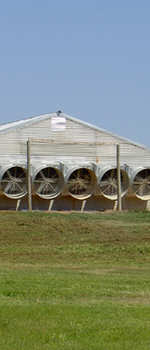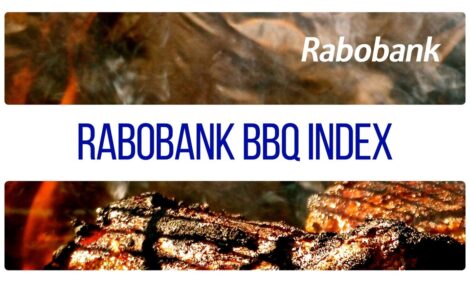



Mash or Pellet? The Question of Housing conditions - Human Protection
By Jean-Jacques Trevidy, Hubbard Europe - This article evaluates the options of mashing or pelleting broiler feed, and like many choices the broiler producer has, the answer is dependant upon a number of factors (page 4/4).Housing conditions - Human Protection:
|
|
| Contents/Navigation |
 |
Housing conditions - Consumer's protection:
Up until recently, farm results and flock health balance was maintained through the use of antibiotics, growth promoters, and coccidiostats. The recent ban on the use of several products, the limited use of others, the longer withdrawal periods prior to slaughter create a more "ecological' environment where the digestive equilibrium is now achieved by acting on feed and on housing conditions.
Housing conditions
Monitoring temperature, humidity and ventilation is essential to ensure that the intestine and kidneys function correctly. Too high temperature variations, or air draughts in the house, have an impact on chick feeding behaviour. In low temperature and humid conditions, feed consumption is lower, and both gizzard and intestinal viol development are retarded. Such conditions may be met in tropical climates at night when the temperature goes down to 20-250C and or humidity is high. If houses are not heated properly, light is not sufficient, and ventilation is reduced to try to maintain heat, feed consumption is reduced. During the day, the chick wiii over-consume and drink. If the feed is fine, feed digestive flow is quick and feed assimilation is reduced, which results in diarrhoea (with pasted vent). Very rapidly the flock shows impaired uniformity in growth and feathering even when using antibiotics.
Pellets made using fine grinding and high dye temperature increase the viscosity of the intestinal content. This effect is enhanced when saturated fat (palm oil) is added to the formula. In this case, the osmotic pressure of the intestinal content is increased so much that the resorption of liquids normally occurring in the intestine is blocked. Nutrient assimilation in the duodenum-jejunum loop is impaired, favouring bacteria proliferation in the lower digestive tract. This results in a disruption of the microbial balance leading to development of conforms, salmonella and clostridia. The intestinal microbiological balance can then only be restored by using antibiotics, which today has become an undesirable practice.
The above conclusions can be drawn from many different conditions in different countries and they apply not only to young chicks, but also to adult breeders or grown broilers. Most of the experiments conducted in 'organic" type production conditions, with no use of antibiotics or growth promoters or ingredients from animal origin, show that good monitoring of ventilation, humidity, temperature and more generally hygiene, are key points. One may expect further improvement through the use of vaccines against coccidia, salmonella or clostridia.
Feed: manufacturing / formulation
The No 1 criteria in feed manufacturing is raw material selection at the factory entrance, which must conform to both nutritional and microbiological (bacteria and fungi) criteria.
As explained before, pelleting may be a good method to conform to broiler requirements and to obtain the expected performance. When the pelleting process is achieved under good hygienic conditions, it contributes to lower the bacterial load of the feed (enterobacteria, salmonella, E. coli, etc.). However, it may become more risky where the farm technical level is low and the use of antibiotics is strictly limited if not forbidden.
Conversely, a coarse and uniform mash produced from well-controlled raw materials may yield very competitive results. This will be more obvious with higher energy levels. Mash presentation helps steady the digestive process, especially in farms where the technical or health level is not satisfactory,
The above conclusions, together with the current concern for a more 'ecological' production system, have led to changes in the feed manufacturing process: grinding speed reduction to 55m/s (1,500 rpm i.s.o. 3,000 rpm), grit] mesh size increase (4 to 6 mm i.s.o. 3 mm), use of wire-type grills with a higher % of holes and the addition of whole grain (wheat) before or after grinding.
Practically, the ideal balance between an expensive good quality pellet and a cheaper good coarse mash is not so easy to find. There are many different economical solutions in between these two options, in response to the complex equation of raw materials, power costs and housing conditions, etc. In one given environment, the best economical balance may even not be that of top class broiler growth.
Mash or Pellet? We hope we have shown that there is no universal answer and that each set of conditions may lead to a different answer.
| Introduction | Genetics | Feed | Housing |
Source: Hubbard Technical Bulletin - January 2005









